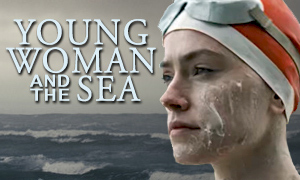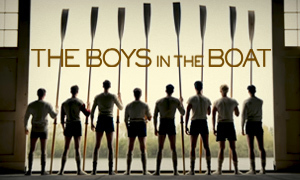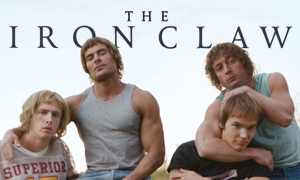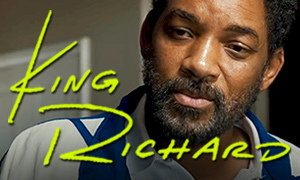How Accurate is "Ford v Ferrari"? The True Story of Ken Miles & Carroll Shelby
| REEL FACE: | REAL FACE: |
Matt Damon
Born: October 8, 1970 Birthplace: Boston, Massachusetts, USA | Carroll Shelby
Born: January 11, 1923 Birthplace: Leesburg, Texas, USA Death: May 10, 2012, Dallas, Texas, USA |
Christian Bale
Born: January 30, 1974 Birthplace: Haverfordwest, Pembrokeshire, Wales, UK | Ken Miles
Born: November 1, 1918 Birthplace: Birmingham, England, UK Death: August 17, 1966, Riverside International Raceway, California, USA (test driving crash) |
Caitriona Balfe
Born: October 4, 1979 Birthplace: Dublin, Ireland | Mollie Miles
|
Jon Bernthal
Born: September 20, 1976 Birthplace: Washington, D.C., USA | Lee Iacocca
Born: October 15, 1924 Birthplace: Allentown, Pennsylvania, USA Death: July 2, 2019, Los Angeles, California, USA |
Josh Lucas
Born: June 20, 1971 Birthplace: Fayetteville, Arkansas, USA | Leo Beebe
Born: July 20, 1917 Birthplace: Williamsburg, Michigan, USA Death: June 30, 2001, Jacksonville Beach, Florida, USA |
Tracy Letts
Born: July 4, 1965 Birthplace: Tulsa, Oklahoma, USA | Henry Ford II
Born: September 4, 1917 Birthplace: Detroit, Michigan, USA Death: September 29, 1987, Detroit, Michigan, USA (pneumonia) |
Remo Girone
Born: December 1, 1948 Birthplace: Asmara, Central Region, Eritrea | Enzo Ferrari
Born: February 18, 1898 Birthplace: Modena, Kingdom of Italy Death: August 14, 1988, Maranello, Italy |
Ray McKinnon
Born: November 15, 1957 Birthplace: Adel, Georgia, USA | Phil Remington
Born: January 21, 1921 Birthplace: Santa Monica, California, USA Death: February 9, 2013 |
Alex Gurney
Born: September 4, 1974 Birthplace: Newport Beach, California, USA Portrays his father in the movie. | Dan Gurney
Born: April 13, 1931 Birthplace: Port Jefferson, New York, USA Death: January 14, 2018, Newport Beach, California, USA (complications from pneumonia) |
Did Ford almost buy Ferrari?
Yes. In the early 1960s, Henry Ford II's love for car racing was part of the reason that he decided that the Ford Motor Company would start competing. The other part had to do with the fact that Ford needed a marketing boost in the face of slipping sales and stiff competition from GM, especially when it came to attracting younger buyers. The only problem was that Ford didn't have a sports racing car in its fleet. By 1963, Henry Ford II (the grandson and namesake of the company's founder) decided that the quickest way to get Ford on the racetrack would be to buy Ferrari. Ford sent a group of dealmakers to Modena, Italy to hash out a deal with Enzo Ferrari, which took months of meticulous negotiation. The negotiations are expedited for the sake of the movie.
The Ford v Ferrari true story reveals that Ford's offer was $10 million. At first, Enzo Ferrari agreed to the deal, but there was a clause in the contract which stated that Ford would control the racing budget (and in turn the decisions). Enzo Ferrari (also known as "Il Commendatore") couldn't handle the idea that anyone else would control the decisions regarding his race team, so he bailed on the deal. Ferrari using Ford to leverage more money out of Fiat is fiction. Fiat didn't buy a stake in Ferrari until early 1969, well after Ford's first Le Mans win. It's true that an angry Henry Ford II sought revenge by directing his company's finances toward putting together a racing team and building a sports car that could beat Ferrari, specifically at the most prestigious car race in the world, the 24 Hours of Le Mans.
What is the 24 Hours of Le Mans?
First held in 1923, the 24 Hours of Le Mans, which takes place in the town of Le Mans, France, sets itself apart because instead of being a fixed-distance sports car race that awards the win to the car with the minimum time, the 24 Hours of Le Mans gives the win to the car that covers the greatest distance in a span of exactly 24 hours. Like in the film, one of the biggest challenges is to create a car that will have the endurance to last the full 24 hours without mechanical failure.
Did Carroll Shelby stop racing because of heart problems?
Yes. Shelby (portrayed by Matt Damon) had been only the third American driver to ever win at Le Mans, co-driving an Aston Martin DBR1 (with Englishman Roy Salvadori) to victory in 1959. A Ford v Ferrari fact check confirms that a life-threatening heart ailment, angina pectoris, prompted Shelby to retire as a race car driver. Like in the movie, he was prescribed nitroglycerin tablets. He also wanted to put his focus into building cars. He received a heart transplant several decades later in 1990.
Did Ken Miles really drive tanks during WWII?
Yes. At the start of WWII, Christian Bale's real-life counterpart, Ken Miles, was posted to an anti-aircraft unit. He then worked in machinery, and in 1942, he was promoted to staff sergeant. He participated in the 1944 D-Day landings as part of a tank unit. -Motor Sport
As for his wife Mollie (Caitriona Balfe) and son Peter (Noah Jupe) in the movie, they're indeed based on his real-life wife and son, Mollie Miles and Peter Miles.
Were the early versions of the Ford GT40 really that dangerous?
Yes. The Ford GT40s (they stood just 40 inches high) that competed at Le Mans in 1964 and 1965 were far from perfect. While exploring how accurate Ford v Ferrari is, we learned that Ford failed to finish the race both years. Though the cars were fast, they broke down. Gearboxes failed, head gaskets blew, and the front brake rotors heated up to 1,500 degrees in seconds and stopping working. The aerodynamics were also dangerously bad. At over 200 mph, the cars developed so much lift they'd encounter wheelspin. While test driving the vehicles in 1964, two aerodynamically unstable GT40s crashed. The accidents prompted Ford test driver Roy Salvadori to quit. "I opted out of that program to save my life," he commented. -Popular Mechanics
Was Ford involved in the making of the Ford v Ferrari movie?
No. Other than providing certain archival materials for research, Ford didn't participate in the production of the film. The movie is based on A.J. Baime's 2009 book Go Like Hell: Ford, Ferrari and Their Battle for Speed and Glory at Le Mans.
Does the Ford v Ferrari movie omit some of the races?
Yes. "There were more races than we could track." said director James Mangold of Ford v Ferrari's historical accuracy. "Growing up watching sports movies, I didn't want to have to montage my way through seven or eight races as opposed to really landing in one." Mangold said that omitting some of the earlier races was necessary because he wanted to have time to accurately communicate the idea of a 24-hour race and how hard it was on the vehicles and the men. "The only way to communicate that is to not do the 24-hour race in 11 minutes. We're making Saving Private Ryan in reverse. We watch 90 minutes of drama, then go to war. The race itself is almost an hour, an immersion." -IndieWire
Were Carroll Shelby and Ken Miles really as integral to the development of Ford's GT40 race car?
Not exactly. The Ford v Ferrari movie depicts automotive designer Carroll Shelby (Matt Damon) and British driver Ken Miles (Christian Bale) as mavericks who fight corporate interference, namely from Ford's racing director, Leo Beebe (Josh Lucas). In order to create a more compelling story around its two main characters, Shelby and Miles, the movie largely omits the vast cast of participants who were responsible for the success of the GT40 at the 24 Hours of Le Mans. A Ford v Ferrari fact check reveals that in addition to Shelby and Miles, many other talented Ford employees and contractors worked to solve the complex set of engineering hurdles in an impossibly tight time frame. This included the Ford bureaucrats at the Dearborn, Michigan headquarters, nicknamed the Glass House.
Did Carroll Shelby take Henry Ford II for a heart-pounding ride?
No. The Ford v Ferrari true story reveals that it was actually Ken Miles (Christian Bale's character) who took Ford for a wild ride. There's no record of Ford crying, which is fiction. Shelby also never locked Leo Beebe in an office while Ford was being taken for a ride. -IndieWire
Did Dan Gurney have to push his car across the finish line at Sebring in 1966?
Yes. Though it's not in the movie, investigating the true story confirms that this actually happened. Gurney's car expired on the final corner and Ken Miles passed him, taking first place. Gurney then pushed his car across the finish line. His son, Alex Gurney, also a racer, portrays him in the Ford v Ferrari movie.
Did Ford perfect the GT40's engine by running it on a dynamometer that simulated Le Mans?
Yes. To guarantee that the engines would last at the 24 Hours of Le Mans, Ford ran them on a dynamometer (an instrument that measures the power output of an engine) controlled by a program that simulated durability and performance. Computer-controlled servo actuators then ran or "drove" the engine just as it would be driven at Le Mans, complete with pit stops that included shut downs. An engine was run until it exploded, at which time the engineers would address the problem and start the process over until their design was able to last back-to-back Le Mans simulations. The result was a robust 427-cubic-inch V-8 engine. -Popular Mechanics
Did all of the races in the movie actually happen in real life?
No. During our exploration into Ford v Ferrari's historical accuracy, we learned that the race at Willow Springs Raceway in California never actually happened in real life. It was created to help develop the personalities and relationship of race-team leader Carroll Shelby (Matt Damon) and his driver Ken Miles (Christian Bale). -Car and Driver
Did the Ford bureaucrats, including racing head Leo Beebe, refuse to send Ken Miles to Le Mans in 1965?
No. The conflict between Ken Miles and the Ford bureaucrats is played up significantly in the movie, in addition to Miles' hot temper. Historically, there wasn't nearly as much push-back from Ford regarding Ken Miles competing at Le Mans. Unlike what's seen in the movie, Miles did go to Le Mans in 1965, losing to Ferrari. He was forced to stop due to gearbox failure.
Did Carroll Shelby bet his business on Ken Miles winning a race?
No. Carroll Shelby never bet Henry Ford II his entire business so that Ken Miles could drive at Le Mans. Ford's right hand Leo Beebe (portrayed by Josh Lucas) did object to risks that Ken Miles took on the track, but the tension between Shelby and Beebe in the movie is significantly dramatized. Shelby also never carried a sign over to the shoulder of the track that read, "7,000+ go like hell."
Did Henry Ford II hand racing division head Leo Beebe a handwritten note that said, "You better win."?
Yes. Not included in the movie, this happened several weeks before the 24 Hours of Le Mans endurance race. Ford wrote the message on a business card and handed it to Beebe, who kept it in his wallet for the rest of his life. In the film, Leo Beebe is portrayed by Josh Lucas.
What year did Ford finally beat Ferrari at Le Mans?
The Ford GT40 brought Ferrari's dominance at Le Mans to an end in 1966, when the Ford GT40 Mark IIs captured first, second and third place. Ford also took the top spot at Le Mans the following three years - 1967, 1968 and 1969. Factory support was withdrawn after the 1967 win. Privately owned GT40s captured the top spot in '68 and '69.
Was Enzo Ferrari at Le Mans?
No. "The biggest cheat in this movie: Ferrari never showed up at Le Mans," says director James Mangold. "I insistently put him there. I couldn’t stand the idea of cutting to the kid and mom and Ferrari on the phone or on radios, I couldn’t do it. Sorry, history!" As for Henry Ford II, he was present at Le Mans. -IndieWire
Are the movie's racing scenes real or CGI?
The film's intense racing footage is 100% real with no computer generated effects. One of the only things that is CGI is the shots of the crowd, due to the enormous size of the audience, which would have been difficult to recreate.
Were the real-life cars that competed at Le Mans used in the movie?
No. The cars that still exist are worth millions and are far too valuable to be used in a movie. Instead, period-correct replicas were built for the film, including the Le Mans-winning Ford GT40s and Ferrari 330 P3s. The Ford GT40 that takes first place at Le Mans in the movie is a Superformance GT40 Mk II replica that was borrowed from Shelby collector William Deary. It is an exact copy of the original (pictured below), both inside and out.
Did Ford win the 1966 Le Mans because of brakes?
To a large degree, yes. Ford engineer Phil Remington (portrayed by Ray McKinnon) came up with a brake system that would allow the pit crew to quickly swap out the pads and rotors during a driver change. This meant that brakes would no longer have to be run beyond their limits. The Ford v Ferrari true story confirms that the other teams indeed cried foul, complaining that it gave Ford an unfair advantage, but there was no rule against it. -Popular Mechanics
[SPOILER ALERT] Is the finish of the race at the end of Ford v Ferrari based on the true story?
Yes. Video and photos exist of the three Ford race cars finishing together at the 24 Hours of Le Mans race. It's true that Ken Miles had been minutes ahead of the other cars, but due to self-serving instructions from Ford, combined with a technicality, Miles was given second place instead of first. Ford management had indeed instructed him to slow down so that all three of their cars could cross the finish line together. Miles wasn't as outraged over the idea as he is in the movie. In an effort to please the company he worked for, he let off the gas. It is believed that despite team orders, Bruce McLaren accelerated just ahead of Miles at the last moment in an attempt to finish in the top spot (in the film, all three cars cross at the same time).
Even if Ken Miles had been slightly ahead or tied with McLaren when the race ended, the fact that he obeyed orders from Ford and slowed down is what cost him the win. This is because race officials ruled that since Bruce McLaren and Chris Amon started the race further back, they therefore covered a greater distance in the same time. The bungled photo finish resulted in Ken Miles being denied the coveted chance of winning Sebring, Daytona, and Le Mans all in the same year. Unlike in the movie, Carroll Shelby admitted to being involved in ordering the three Ford cars to cross together, a decision he regretted for the rest of his life because of what it cost Ken Miles.
How much money did Ford spend trying to win Le Mans?
It's estimated that Ford spent no less than $25 million on its effort to win at the 24 Hours of Le Mans (some have put the estimate around $100 million). After their 1966 and 1967 wins, Ford burned another $1 million preparing for the 1968 race, but then decided to withdraw financial support from the racing division (private GT40 owners won in '68 and '69). Today, companies still spend big amounts on their race teams. During Audi's recent span of victories at Le Mans, they invested approximately $250 million per year on their race team. Ferrari reportedly pumps $500 million per year into its Formula One program. While Ferrari offers street-legal versions of their cars largely to fund their racing program, it's harder for companies like Audi or Toyota to justify the expense, since their car sales arguably are not dependent on their racing programs.
Did Ken Miles die shortly after the 1966 Le Mans race?
Yes. Ken Miles, who is portrayed by Christian Bale in the film, died two months after the 1966 Le Mans. He was killed during a freak accident while test driving the Ford J-car, which was to be the successor to the Ford GT40 Mk II. Miles was approaching the 1-mile, downhill back straight at the Riverside International Raceway in Southern California, going over 200 mph. Rear end lift caused the car to loop, flip, crash and catch fire, breaking into pieces and ejecting Miles. He died instantly.







